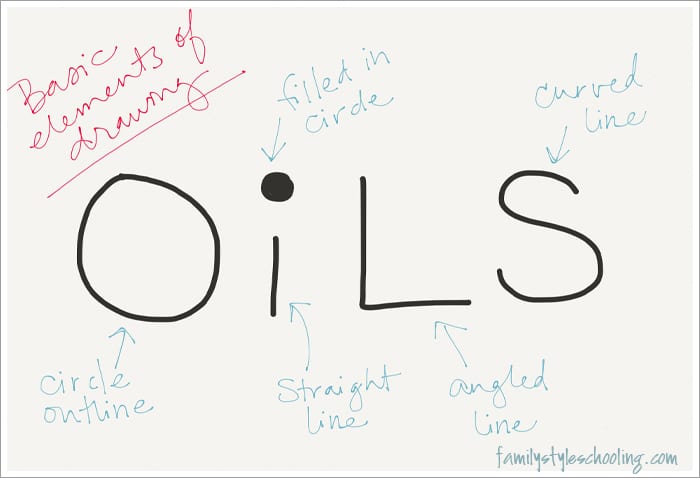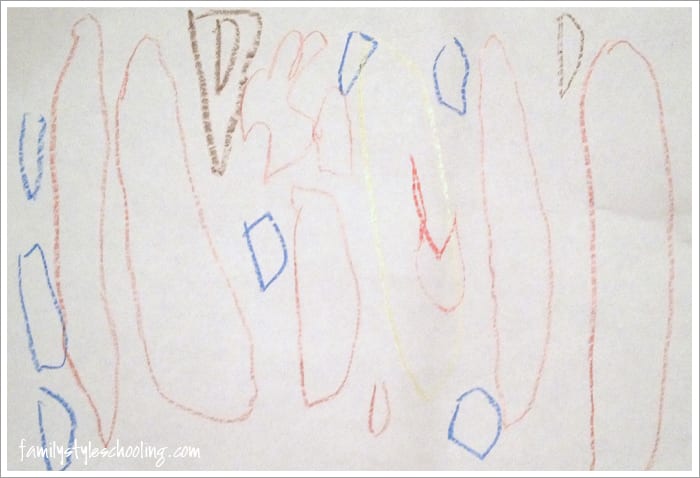The Wonder of Worms
Its been a while since I've had the opportunity to interact with preschoolers. Last week we (my kids and I) entertained one of my friend's kids while she attended a Classical Conversations Practicum.
Since I spend most of my time with older kids having conversations, I thought it would be fun to try some of the basic questions on a younger crowd. Our morning made me wish I could go back to the beginning with what I know now and restart our homeschooling. It wasn't perfect, but I thought it would be fun to share how it went.
Knowing that we're heading into Cycle 1, I pulled out my "classification of living things" song...to the tune of "The Lion Sleeps Tonight." We danced around the living room with stuffed animals singing, "Kingdom, phylum, class, order, family, genus, species...wimowep, wimowep, wimowep, wimowep..."
After our dancing debut, we compared stuffed animals to help understand why we classify things. First we started with the bear and the bunny.
How are a bear and a bunny different?
- They both have ears, but one has pointy ears and the other has round ears.
- They both move, but one crawls and the other hops.
This is fun, I thought! Let's try another. How about a monkey and a giraffe.
How are a monkey and giraffe different?
- They both have necks, but one is short and the other is long.
- They both have tongues, but one is short and the other is long.
I grabbed a couple of picture books that I thought the kids would enjoy that featured animals, and then something wonderful happened - we practiced the art of inquiry.
I started with a simple book - The Early Bird (affiliate link). This book choice was totally unplanned, and there really was nothing particularly special about this book. I just read and asked questions, and here's how the conversation went. (Read the story in the pictures to help understand the conversation)
Q: Was the sun shining this morning when you woke up? A: No! It was raining hard.
Q: Do you hop out of bed happily? A: I like to stay in bed and snuggle up with my blankets. Q: Is this what birds eat? A: No! They eat worms.
Q: Is this what birds eat? A: No! They eat worms.
Q: Do you cook your fruit? A: No. That looks funny.
 Q: Do birds play with worms? A: No! You don't play with your food. That's silly.
Q: Do birds play with worms? A: No! You don't play with your food. That's silly.
We continued through the book counting the number of peas in the worm's belly, pretending to be lady bugs, frogs, or bunnies, and discussing what we knew about worms. Do they take baths? What do they eat? What happens when they get cut in half? And then the inquiry began.
I pulled out playdough - because lets face it....3-6 year olds are not going to last forever while I research worms! After dividing up the brown dough, each kid started to roll out their portion into little worms, and I ran to get the encyclopedia.
What? You didn't google it? No I didn't! I like to research in real books. Quickly I skimmed the section introducing worms and picked out some highlights:
- Worms are animals with red blood
- Worms are invertebrates. Q: Do you know what a vertebra is? A: A back bone...chimed the 6 yr old. Q: Did you know that worms have zero bones? A: Wow
- Tapeworms can reach 75 feet...Q: If I'm 5 feet tall, how many of me would you need to stretch to 75 feet? A: 15 (from the 14 year old)
Back to comparison:
Q: How is a worm different than a rollie pollie? A: Worms don't have legs, they're more like snakes.
Q: Well, how is a worm different than a snake then? A: Snakes have skeletons (6 year old again)
At this point, the play dough fun had run it's course. We put all of our worms together (and one pile of dirt in the center) and took a picture - they last longer.
Worms complete, I decided that our art lesson might continue as worms are related to one of the basic elements of drawing: the curved line. I quickly introduced the shapes, again practicing comparison with the open circle and the filled in circle.  We discussed how the curved line looked like a worm and they started drawing. While they filled their pages with worms, the questions began rolling: How to the worms grow back? Does a worm turn into two worms after it's cut in half? What do they eat?
We discussed how the curved line looked like a worm and they started drawing. While they filled their pages with worms, the questions began rolling: How to the worms grow back? Does a worm turn into two worms after it's cut in half? What do they eat?
Since I had exhausted the encyclopedia's information, I moved to my next favorite source - Christian Liberty Nature Readers (affiliate link)  There is a whole chapter on Mr. Worm! I read aloud as the kids colored and discussed. Here are the highlights of what we learned:
There is a whole chapter on Mr. Worm! I read aloud as the kids colored and discussed. Here are the highlights of what we learned:
- The worm has a head and a tail.
- If you cut a worm in two, only one end will live. It regenerates the tail, like a crab's claw or spider's leg.
- Worms come out in the rain because their holes fill with water and they can't breathe.
- Worms don't have teeth, so they use powerful muscles to "chew" their food.
- Worms like to eat dead leaves and dead stems.
Tragedy of tragedies, it was raining all morning and we couldn't go out and dig up a worm in the compost pile. All of the worm talk inspired the 6 year old. He was now discussing how he was going to go buy some worms, take them to CC, and present all he knows for his presentation. Knowing that we are months away from our next CC presentation, I gave him the opportunity to stand before our little congregation of learners and share his knowledge. He could have happily preached on worms for the rest of the morning.
When we looked up, two hours had passed and we had covered science (classifying living things and our study of the worm), math (counting the number of peas in the worm's belly from our story and calculating 75/5), literature (reading the book and discussing alliteration), rhetoric (practicing the voices of the various characters and presenting information on worms), logic (Do birds play with worms? Why take a bath and wash with soap if you are going to sleep in dirt?), music (singing our song to remember how to classify living things) and art (sculpting and drawing).
While some sat quietly, everyone was thinking and engaged. It wasn't a lesson plan that I needed to check off of a to-do list, it was an opportunity to be a lead learner - to pursue knowledge by sharing my curiosity and leading a path of inquiry into the subject. I may not have picked worms, but they perked up on the worms and I ran with it. We were all blessed.
Betsy Strauss is an unexpected homeschooler, mother of three, who is in a relationship with a sweet man for life. She loves reading books, drinking coffee, and learning anything with her kids.





I love the real-life examples you have given for asking questions about what you’re studying and how the different subjects all came together!
Thanks! It’s so much fun to be curious with my kids.
I love teaching preschoolers and how a simple read aloud can turn into an entire lesson. My own little ones adore worms. You’ve given me some great ideas about how to approach their lessons. Thanks! 🙂
[…] and fascinated by everything… especially worms. Be sure to read Betsy’s post about The Wonder of Worms and get some great ideas for your own […]